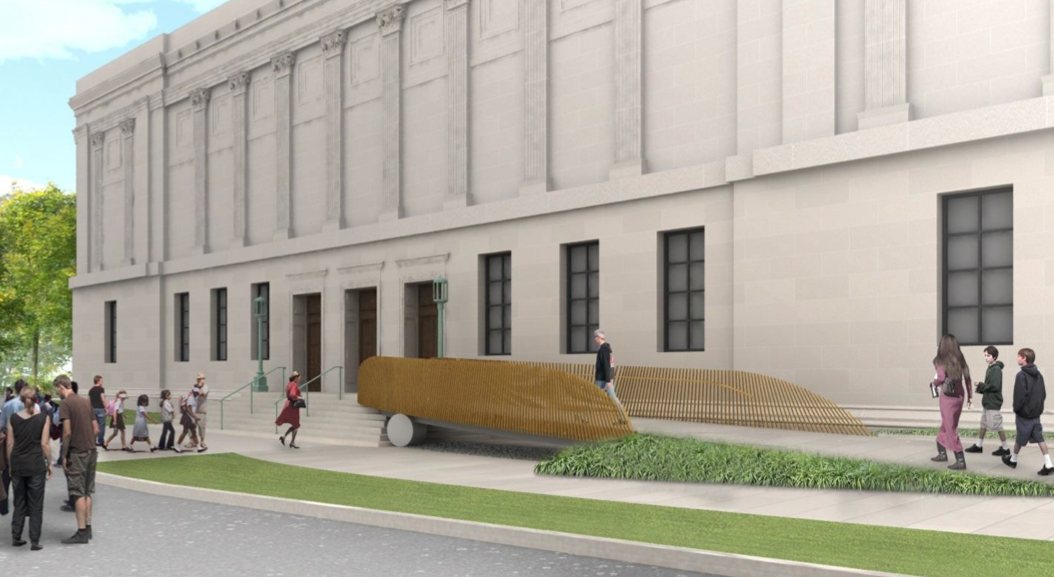
Construction began today on a new accessible walkway and landscaping initiative on the Salisbury Street side of the Worcester Art Museum. Designed by Kulapat Yantrasast of wHY, the “bridge” significantly improves access for visitors, while changes to the adjacent area will create parking spaces for those with disabilities, as well as a more inviting pedestrian pathway into the building. Construction is expected to be completed in spring of next year.
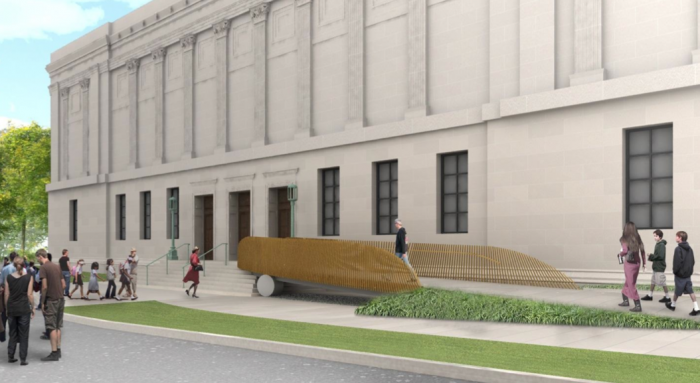
“The bridge is symbolic of the Worcester Art Museum’s overall approach to visitors, reflecting our openness and desire to be as welcoming and accessible as possible,” said Matthias Waschek, director. “In 2012, we re- opened the Salisbury Street doors, thereby re-activating this important part of our building. As we considered how to further support access through this historic entrance, we realized that a completely new and innovation solution was needed. wHY’s design for our new access bridge will allow everyone-including those who, for any number of reasons, are unable to use steps-to enter the Museum through our front door, making it an important gesture of hospitality to our visitors. At the same time, we are also committed to preserving the integrity of our historic façade, which wHY has accomplished beautifully.”

In addition to emphasizing the Museum’s visitor-focused culture, wHY’s design also reflects the Museum’s diverse holdings by reflecting both historic and contemporary aesthetics. Without altering the Salisbury Street doors or distracting from the formal entrance, the designs honors WAM’s past, while the bridge itself in its sleek design and incorporation of minimal shapes reflects the tastes of today. The bridge’s metallic siding creates a dynamic visual parallel with the columns above. Through the Salisbury doors, the visitor encounters the Museum’s Renaissance Court, which immediately reinforces the diversity of WAM’s collection, with the treasured Hunt mosaic on the floor and, currently, a contemporary photographic mural by Robert and Shana ParkeHarrison, as part of the Wall at WAM project.
In addition to the creation of the access bridge itself, the project will re-landscape part of the adjacent area, gracefully connecting the bridge with both new and existing walkways around the Salisbury Street and Lancaster Street sides of the building. By removing 11 parking spaces from directly in front of the Salisbury Street entrance, the area as a whole becomes more open and accessible, and gives greater respect to the Museum’s historic, formal entrance.
These changes are part of a set of strategic goals and initiatives the Museum established under its Vision 2020 plan. Broadly focused on transforming and growing the Museum’s audience, the plan looks at both programmatic and infrastructure changes necessary to increase visitorship and support sustained engagement with families and younger audiences. Under this rubric, the Museum has in recent years re- opened the long-closed doors on its main facade; secured sponsorship support to provide significant free public access during the summer months; become a polling site for the City of Worcester; offered educational programs as part of general admission, thus increasing participation across all programs for all age ranges; and launched an ambitious series of gallery reinstallations—such as [remastered] and the Jeppson Idea Lab—that have focused on helping visitors see the contemporary relevance of art and art history.
The construction project is expected to be completed in spring 2015. During the construction period, the Museum’s Salisbury Street entrance and the adjacent driveway are expected to remain open. Museum parking across Lancaster Street will also remain accessible while the parking spaces in front of the Salisbury Street entrance are closed during construction.

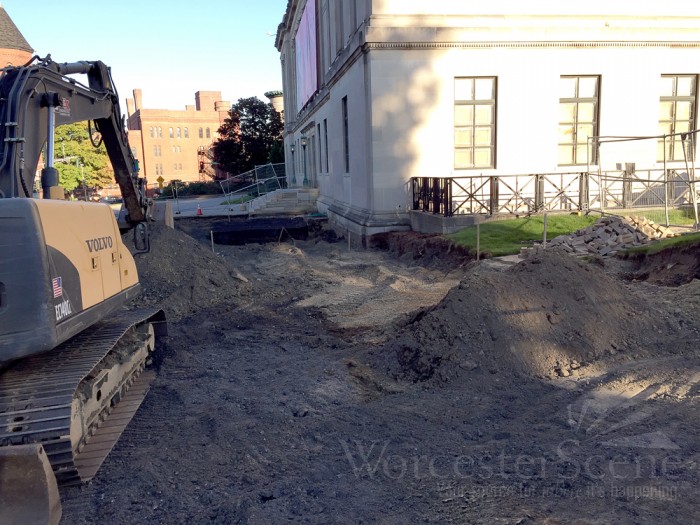
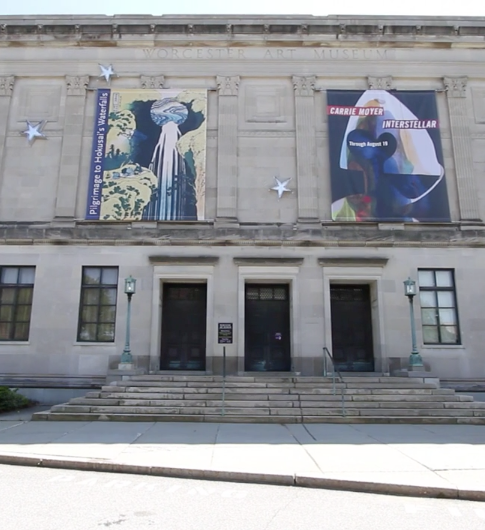
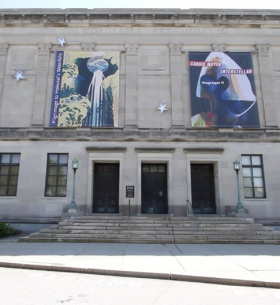 “Opening the front doors of the museum, with the help of our members and community, jumpstarts our museum-wide philosophy of providing access,” said Waschek. “In addition, the Salisbury Street entrance allows our guests to enter directly into the Renaissance Court which we believe is truly the cornerstone of the Museum,” he added.
“Opening the front doors of the museum, with the help of our members and community, jumpstarts our museum-wide philosophy of providing access,” said Waschek. “In addition, the Salisbury Street entrance allows our guests to enter directly into the Renaissance Court which we believe is truly the cornerstone of the Museum,” he added.